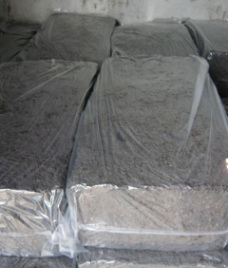Natural Rubber
Natural rubber, also called India rubber or caoutchouc, is an elastomer (an elastic hydrocarbon polymer) that was originally derived from latex, a milky colloid produced by some plants. The plants would be ‘tapped’, that is, an incision made into the bark of the tree and the sticky, milk colored latex sap collected and refined into a usable rubber. The purified form of natural rubber is the chemical polyisoprene, which can also be produced synthetically. Natural rubber is used extensively in many applications and products, as is synthetic rubber. It is normally very stretchy and flexible and extremely waterproof.
Although the number of natural rubber’s production and consumption is far below synthetic rubber or artificial rubber factory, but it can’t be replaced by synthetic rubber. However, the advantages of the hard natural rubber matched by synthetic rubber. There are also advantages possessed of natural rubber compared to synthetic rubber:
- Have the resilience of elastic or perfect, - Having a good plasticity so that the production is easy. - Not easy to heat (low heat build up), and - Having high resistance against the possibility of cracking
The use of rubber is widespread, ranging from household to industrial products, entering the production stream at the intermediate stage or as final products. Tires and tubes are the largest consumers of rubber. The remaining 44% are taken up by the general rubber goods (GRG) sector, which includes all products except tires and tubes.
We are now having excessive products of Natural Rubber from several factories, which conforms to the ASTM 2227-96 standard, particularly for Grade 10 and 20.
- Have the resilience of elastic or perfect, - Having a good plasticity so that the production is easy. - Not easy to heat (low heat build up), and - Having high resistance against the possibility of cracking
The use of rubber is widespread, ranging from household to industrial products, entering the production stream at the intermediate stage or as final products. Tires and tubes are the largest consumers of rubber. The remaining 44% are taken up by the general rubber goods (GRG) sector, which includes all products except tires and tubes.
We are now having excessive products of Natural Rubber from several factories, which conforms to the ASTM 2227-96 standard, particularly for Grade 10 and 20.
Copyright © iCommodity Trading Company 2011





